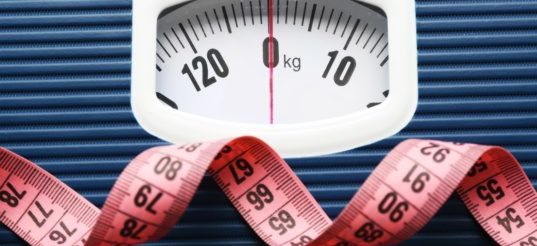Is a flexitarian diet right for you? | Inhabitat – Green Design, Innovation, Architecture, Green Building

Going vegan or vegetarian might be a good choice for your health — as well as the environment — but not everyone wants to take the extreme measure of cutting meat and other animal products completely out of their diet. So, over the past five years, many who want to live a healthy life and/or do their part in the fight against climate change have opted for the flexitarian diet.
What is flexitarianism?
Flexitarianism doesn’t go as far as veganism or vegetarianism, but it does include some of the same principals. Basically, a flexitarian is someone who has a flexible plant-based diet, which means that meat and other animal products are not a part of their regular diet, but they do eat them occasionally.
Usually, people who identify as flexitarians adopt the lifestyle for health reasons or to lessen their environmental impact —or both.
Dietitian Dawn Jackson Blatner created the Flexitarian Diet to help people get the benefits of eating like vegetarians while still being able to enjoy meat and other animal products in moderation.
There are no specific rules in the flexitarian lifestyle—no calorie counting or tracking of macronutrients— and the focus is on what you can eat instead of what you can’t, which makes it all the more appealing to many people.
However, there are a few basic principles that Blatner based the diet on: eat mostly plant-based foods (fruits, veggies, legumes and whole grains), get your protein from plants instead of animals, eat natural foods instead of processed foods, limit refined sugar and sweets, and occasionally incorporate meat and animal products.
Overall, the goal is less meat, more plants.
What are the health benefits?
There are many health benefits when you eat flexitarian. Because most plant-based foods have fewer calories and higher fiber content, this diet can help you lose weight. Eating mostly fruits, veggies, nuts and whole grains can also lead to an increased life expectancy compared to people who regularly eat meat.
Studies have shown that a vegetarian diet can lower the risk of cancer and cardiovascular disease, and the reap the same benefits. On the flip side, there have also been studies that indicate eating red meat can lead to an increase of cancer.
A flexible eating pattern also tends to lead to a lower body mass index (BMI), a lower risk of breast cancer, and lower blood glucose levels compared to people who eat meat regularly.
What are the risks and drawbacks?
Because vitamin B12 is only found in animal products, you can run the risk of a deficiency when you switch to flexitarianism. So, you might need a B12 supplement.
When you reduce or cut out meat from your diet, you might also have lower stores of minerals that are best absorbed from animal foods, like zinc and iron. However, you can remedy this by eating plenty of nuts, seeds, whole grains and legumes.
If you aren’t eating fatty fish, you might not be getting enough omega-3 fatty acids in your diet, which means you need to up your intake of things like walnuts and flaxseeds.
There is also a myth about vegetarianism or flexitarianism that you won’t get enough protein without eating meat. This simply isn’t true. In fact, most people who eat a standard diet eat way more protein than they need to. Plus, you can get the protein you need by eating soy products, rice and beans, and even a peanut butter sandwich.
In order to avoid nutritional deficiencies, it is a good idea to carefully plan your meals to make sure you include enough whole foods— and the right amount of meat and animal products— so you are getting the proper amount of vitamins and minerals.
How to get started
Starting the flexitarian lifestyle isn’t as simple as eating less meat and magically becoming healthier. Theoretically, you could eat a pop tart for breakfast, chili cheese fries for lunch, and a veggie burger with chips and a soda for dinner, and that would follow the vegetarian or flexitarian “rules”. But, there would be zero health benefits.
It’s not just about eating less meat, but also making smart food choices overall. So, in addition to reducing meat consumption, you are also adding nutrient-rich foods to your daily diet, while keeping the processed foods to a minimum.
Instead of trying to drastically change overnight, it is better to take steps towards the flexitarian lifestyle. Start by shopping the perimeter of the grocery store (avoid the aisles) during your next shopping trip, and load up on fresh produce and nuts. Then, try cut your meat-eating down to two to three days a week.
No matter how small the change, it will be a step in the right direction. And, the best part is, you don’t have to say no to your mom’s famous meatloaf at your next family dinner.
